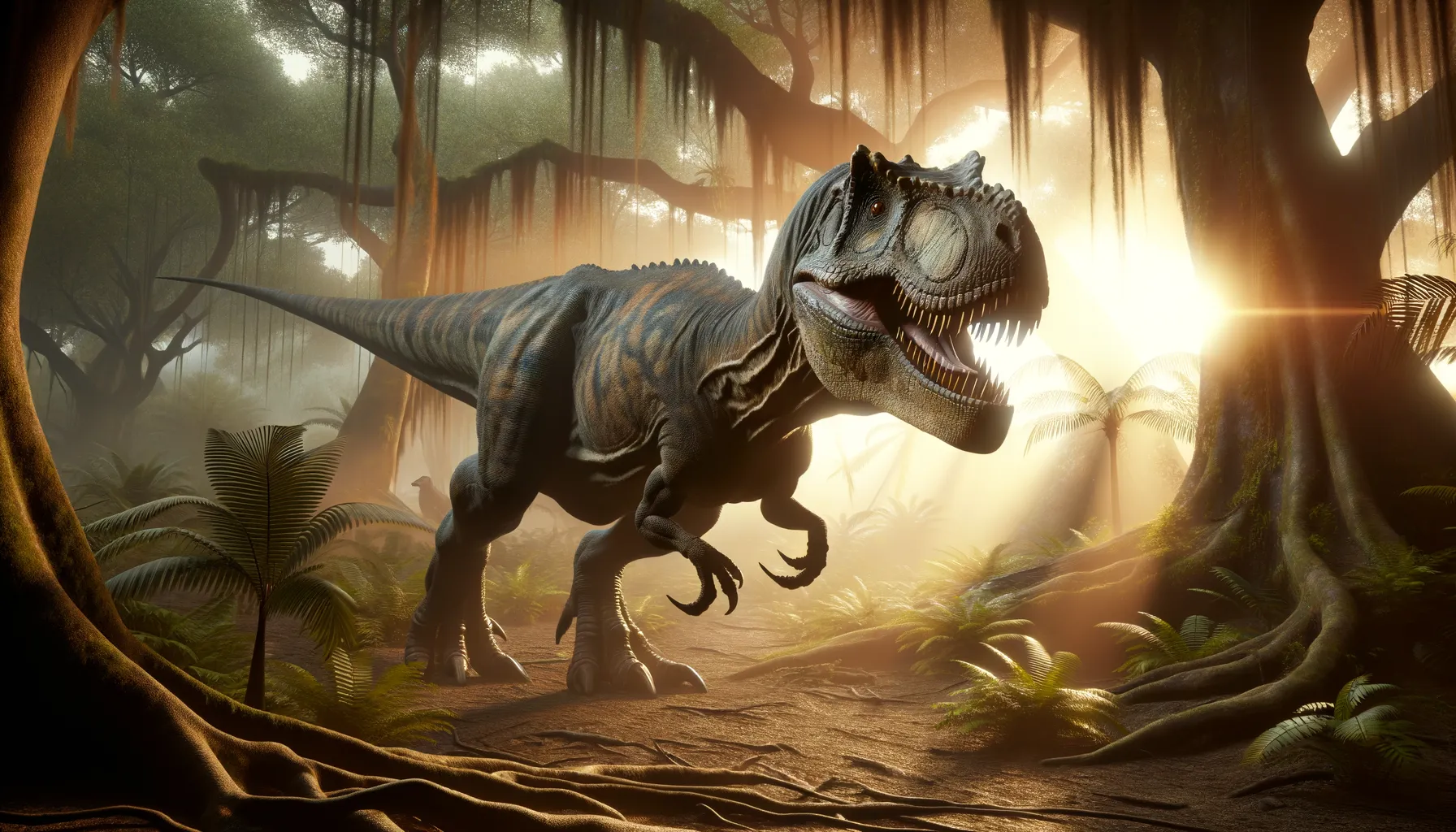
Genyodectes
A fierce predator from prehistoric land.
Period
Cretaceous
Length
Estimated to be about 25 feet long.
Height
Approximately 8 feet tall at the hip.
Weight
Estimated around 1.5 metric tons.
Genyodectes, a large theropod dinosaur, roamed what is now South America during the Cretaceous period. Known primarily for its distinctive jaw and teeth, it was first discovered in Argentina. Though only partial remains have been found, they suggest Genyodectes was a formidable predator capable of hunting large prey with moderate speed and dexterity. Its fossilized remains help provide insights into the ecosystem of its time and its position within the prehistoric food chain.
Diet
Genyodectes was carnivorous, likely preying on smaller dinosaurs and possibly scavenging when necessary. Its serrated teeth were well-suited for slicing through flesh.
Hunting
It may have used stealth and short bursts of speed to capture its prey. Like many theropods, it was likely an ambush predator, relying on surprise to overpower its targets.
Environmental challenges
During the Cretaceous, the environment in which Genyodectes lived was subject to volcanic activity, shifting climate, and competition for resources. These conditions would have forced it to adapt its hunting strategies and migratory patterns. Additionally, the presence of other large predators would have posed significant challenges in securing territory and finding food.
Speed
Likely moderate due to its size.
Lifespan
Comparable to other large theropods.
First discovery
Discovered in early 20th century, in Argentina.
Fun Facts
- Genyodectes is one of the lesser-known dinosaurs, recognized mainly from its jaw bones.
- Its name, Genyodectes, means 'jaw biter', emphasizing its large teeth.
- The fossils of Genyodectes were discovered in Argentina, making it a South American dinosaur.
- It lived during the Early Cretaceous period, roughly 100 million years ago.
- Genyodectes was a theropod, which is the same group of dinosaurs that includes the famous Tyrannosaurus rex.
- The discovery of Genyodectes' jaw helped scientists learn about the evolution of theropod teeth.
- Genyodectes is believed to have been a carnivore, possibly preying on smaller animals in its ecosystem.
Growth and Development
As with many dinosaurs, Genyodectes likely grew quickly, reaching maturity within a few years. Fossils suggest that growth rings, similar to those found in trees, can provide insight into the age and development of these creatures. Juveniles may have had different coloration and markings to help them stay camouflaged and safer from predators.
Habitat
Genyodectes inhabited diverse environments, ranging from lush forests to more open floodplain areas. These regions supplied ample food resources, critical for both sustenance and energy. Water sources would have been essential, not only for hydration but also as potential hunting grounds for ambush.
Interaction with other species
This dinosaur would have interacted with other theropods, either as competitors or in a predator-prey dynamic. It might also have encountered herbivorous dinosaurs, serving as potential prey. Such interactions would have required Genyodectes to continually adapt its hunting and survival strategies.
Natural lifespan
Its natural lifespan is believed to be similar to other large theropods.
Reproduction
Genyodectes likely laid eggs, with nests possibly hidden or guarded by one or both parents. Hatchlings would have been small and vulnerable, requiring growth and learning before becoming effective predators.
Social behaviour
It is unclear if Genyodectes was solitary or social, though hunting behavior suggests possible lone activity. However, some evidence from related species shows that young may have been raised communally.
Fossil locations
Genyodectes fossils have predominantly been found in Patagonia, Argentina, making it an important part of South America’s prehistoric record. The early 20th-century discovery provided crucial evidence of the diverse dinosaur fauna in this region.
